Sindhuli gadhi ghumera herda suntali mai
Kati ma ramro durbar
Maryo ni maya le maryo !
This melodious song sung by Krishna Bikram Thapa in 1979 was very popular on Radio Nepal. Now, not only the beautiful palace (kati ma ramro durbar) but also a museum has been added to the list of must-visit places in Sindhuligadhi.
About one kilometer away from the historical palace of Sindhuligadhi as mentioned in the Thapa’s euphonious song, Nepal Army has set up a war museum. Now, Sindhuligadhi has become a place to brief people the ancient warfare Nepal showed in the Anglo-Nepal war.
The Nepal Army has constructed a 6-room museum building of 6,281 square feet at a cost of Rs 65 million. At the same time, the fort seems to have restored its glorious beauty.
On the wall of the museum building, there is a ‘theater’ offering the background and the importance of the fort. It is visible from afar. At the entrance of the building, one can see the names of four war heroes Kaji Bansh Raj Pandey, Khajanchi (Treasurer) Bir Bhadra Upadhyaya, Shikari Sardar Banshu Gurung and Shri Harsh Panth written in capital letters.
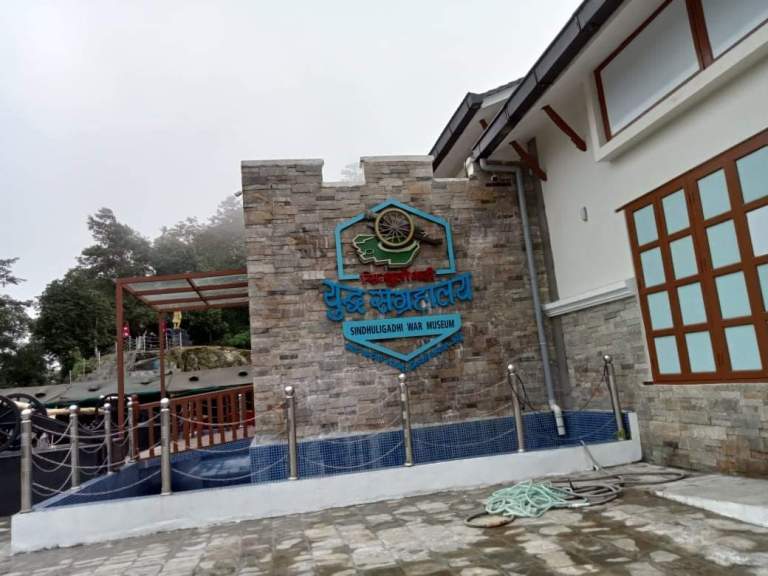
Along with the entrance to the museum, materials depicting or offering glimpses of the battle of Sindhuligadhi, the battle between the then Gurkha army and the British army, are placed beautifully. Materials including home-made weapons used by the army at that time, uniforms worn by the domestic army during the war and the British army make the visitors recall the historical war.
Similarly, the museum embraces the visitors with many Mithila paintings, map of Nepal before the Sugauli Treaty, letters of wartime situation, timeline of Sindhuligadhi war and documentary are also kept in the museum.
The museum also houses wartime paintings, portraits of Nepali and British warriors, wartime inscriptions, and a library for those interested in history. The pictures of Kaji Bansh Raj Pandey, Treasurer Birbhadra Upadhyaya, Shri Harsh Pant, Shikari (Hunter) Sardar Bansh Gurung and six others seem looking at the visitors.
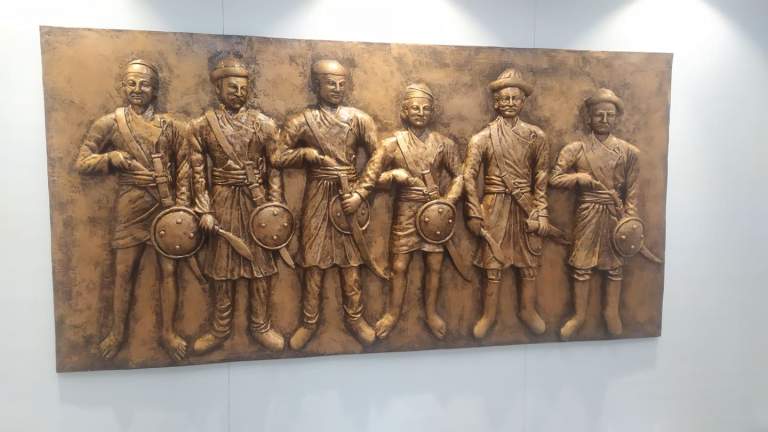
Not much far from the museum are the reconstructed Gadhi Durbar, the administrative building, the jail and court ruins still preserved. Outside the museum, statues of four heroes can be seen. The names of Bansha Raj, Bir Bhadra, Sri Harsha and Bansha Gurung who defeated the enemy in October 1768 are inscribed in the museum.
After going up the stairs from the nearby statue, you can find the statue of Prithvi Narayan Shah. The museum, which depicts wartime activities, and its surrounding statues will surely bless the researchers, students, and the new generation with a special satisfaction as a reward for the visit.
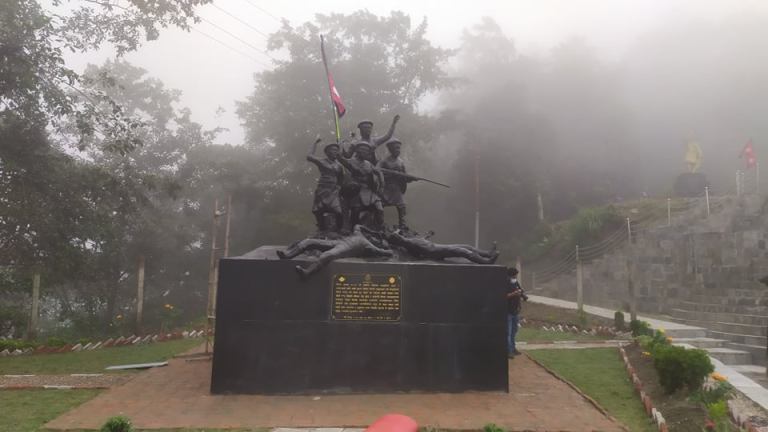
This war museum is considered to be the first of its type in Nepal. The museum was constructed by the Nepal Army in collaboration with Kamalamai Municipality at a cost of Rs 65 million.
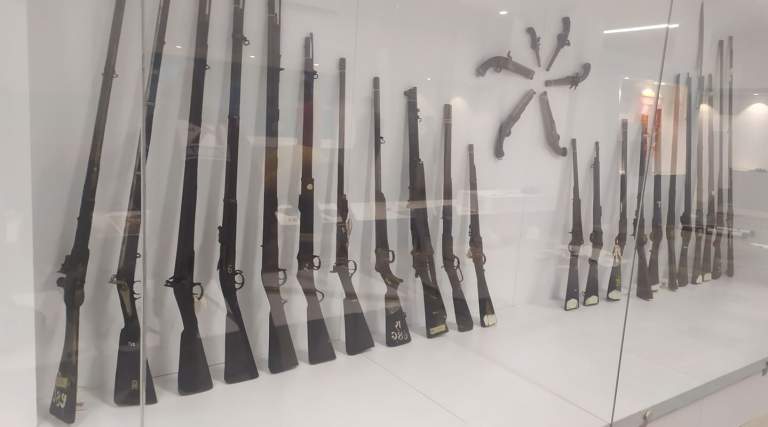
The then Deputy Prime Minister and Minister of Defense had laid the foundation stone of ‘Sindhuligadhi War Museum’ on November 10, 2019. The construction, which was started amid the coronavirus pandemic, was inaugurated by President Bidya Devi Bhandari on July 28.
Historian says
Historian Sagar Kumar Dhakal briefed Khabarhub on the history of the fort. Here go the excerpts from historian Dhakal:
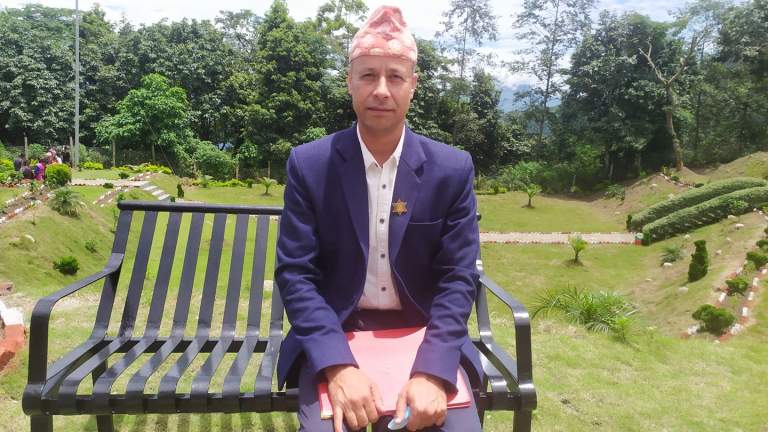
In particular, there was a large customs post at Sindhuligadhi in Makwanpur state. The office is preserved well. There used to be a good annual income from that customs post.
According to him, Kathmandu repeatedly attacked and tried to take over the customs post. Sindhuli also continued its counter-attack. Especially for two hundred years it fell under the Makwanpur state. Then, Prithvi Narayan Shah began his campaign of expansion of Gorkha kingdom.
Wishing he could get Makwanpur as part of his kingdom, Gorkha’s Shah asked for King Hemkarna Singh’s daughter (Indra Kumari) for marriage. At that time, according to the Tarai culture, it was customary to organize marriage ceremony but not send the daughter to her husband’s instantly.
When Hemkarna refused to send Indra Kumari and the groom’s side had to return empty-handed. In retaliation for the humiliation, he increased the enmity by saying that he would take the bride even if he had to slaughter the palace.
The king died in 1761. After Hemkarna’s death, his elder son became king. Although, Prithvi Narayan had deep respect to King Hemkarna, but did not like his elder son at all. So, Gorkha attacked Makawanpur after Hemkarna’s death.
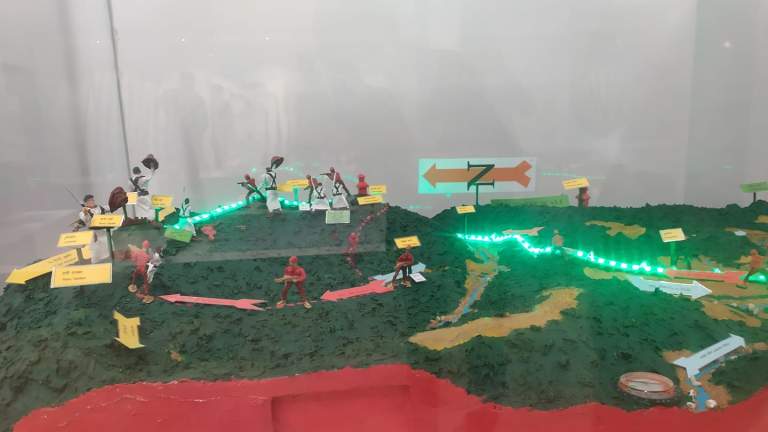
Sindhuligadhi came under Gorkha state from Makwanpur state in 1762. When Gorkha kingdom started encircling Kathmandu valley, by conquering the neighboring states of the valley, King Jaya Prakash Malla in Kathmandu felt insecure.
Malla sought the help of the company government, the government under East India Company. The company government had its own interest; it also had to go to Tibet after Kathmandu. By that time, they had even made Bengal their own.
The aim of the company government was to annex Nepal by winning under the pretext of helping. Henceforth, Prithvi Narayan Shah made a strategy with the realization that fighting against the ‘East India Company’ was an uphill task.
He picked up some local Magars and made Kazi Bansh Raj Pandey, Treasurer Birbhadra Upadhyaya, Shri Harsh Pant and hunter Sardar Bansh Gurung the generals and prepared for the days ahead.
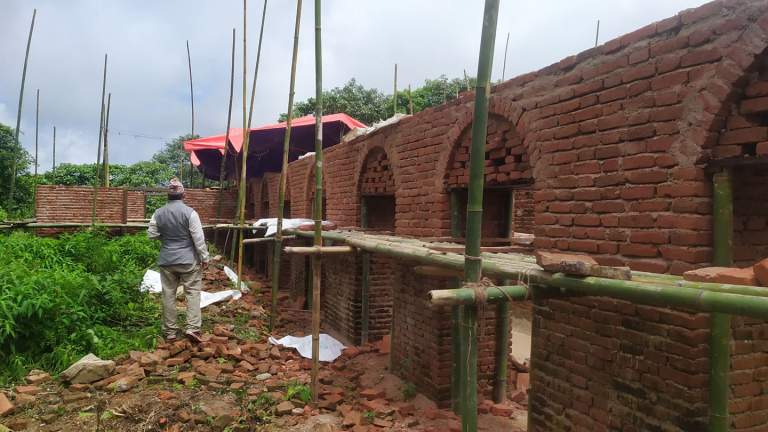
Although 2400 troops came from the Company Government’s side, the strategic warfare of the Gorkhalis killed 1600. Defeated, Captain Kinloch fled with about 800 of his troops.
A second battle was fought with the British. Prithvi Narayan Shah kept Sindhuligadhi as a strong fort and provided security. It was strengthened during the reign of Ran Bahadur Shah. During the war, it was made the headquarters.
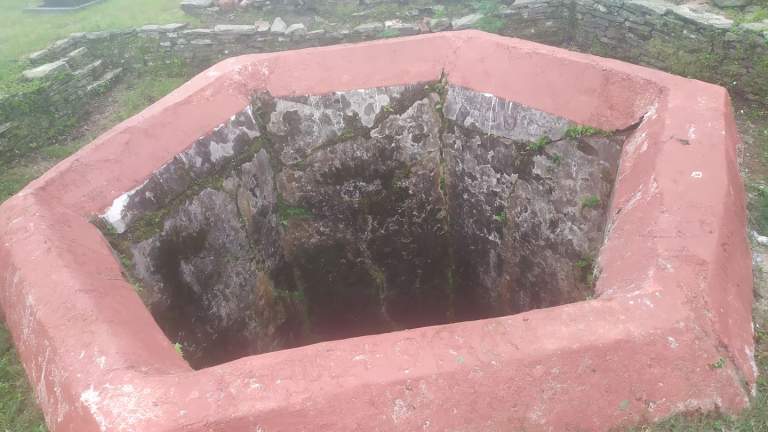
As soon as the Rana period ended, the offices were shifted down. Then the fortified area became desolate. This place has been secluded for about 60 years. The plant grew into a bush.
After the election of local government in 2018, Kamalamai Municipality took initiative to develop Sindhuligadhi as a historical heritage.
Tourism Promotion
Sindhuligadhi is the place where the British lost for the first time in history.
Historian Dhakal says that there are many people who come to see how and where the British lost the war.
According to him, mostly, the Indian citizens come to Sindhuligadhi to see the place where the British had to see their first defeat.
“It takes two and a half hours by motorbike and three hours by car to reach the fort from Sitamadhi market in India,” he said, adding, “The beauty and the history of the place makes them ready to pay even Rs 50,000 for the visit.”

He believes that this place can be a key destination for internal and external tourists who are interested to study how the ancient war was fought and what kind of weapons were used then.
Kamalamai’s Mayor Khadga Bahadur Khatri informed that around 400 domestic and foreign tourists visit the fort daily these days.
According to him, domestic tourists have to pay Rs 50 and external tourists Rs 200 as the entry fee for the museum.
Students get 50 percent discount. Senior citizens do not have to pay fees at all.
Museum security concerns
The Nepal Army has handed over the museum to Kamalamai Municipality.
At the same time, the security of the museum has become a matter of concern for the historians, locals and those who know the significant of the fort.
Mayor Khadgi shared the plan of deploying the necessary staffs.
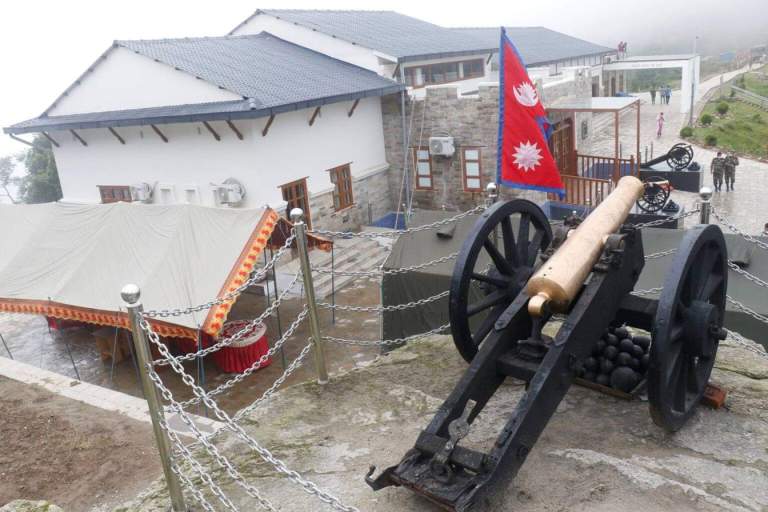
He also said that the municipality would search for the number of new and old weapons in the area and would try to add the feathers to the museum.
According to him, the municipality will take initiative to complete the museum despite the scarcity of materials right now.
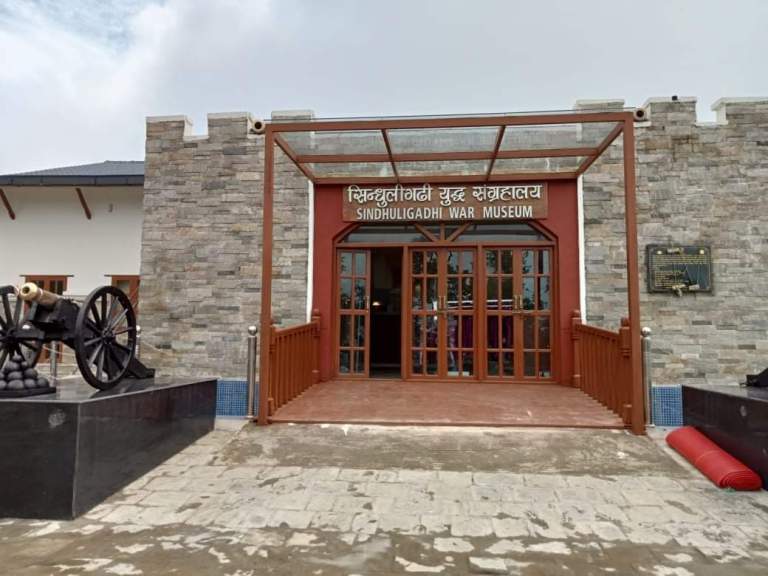


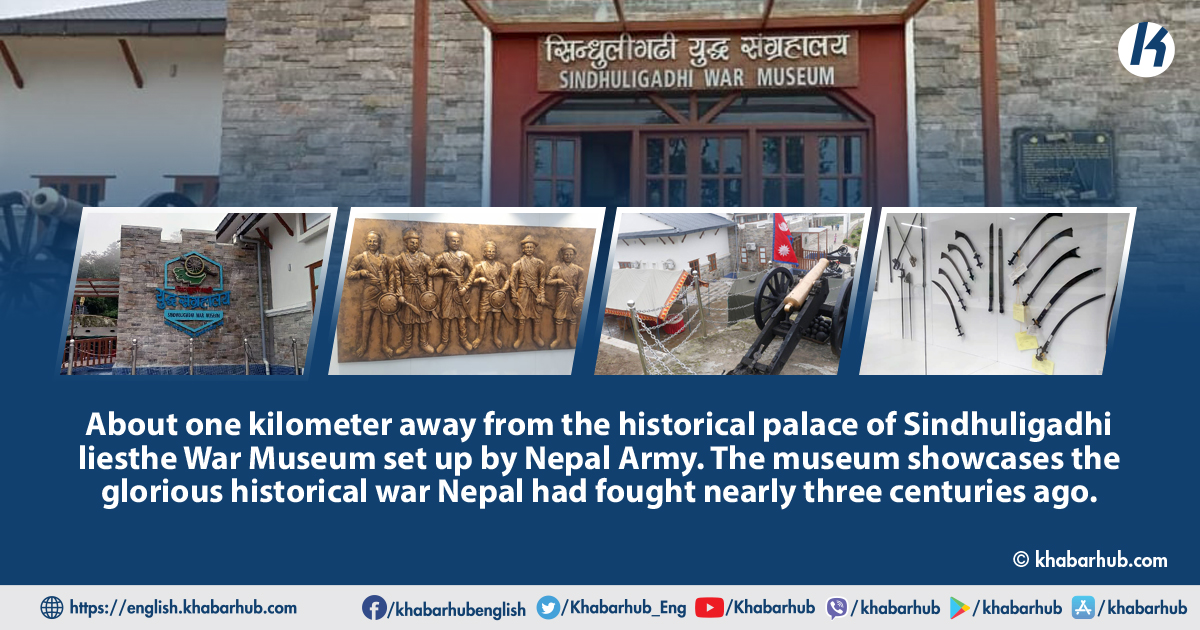





Comment